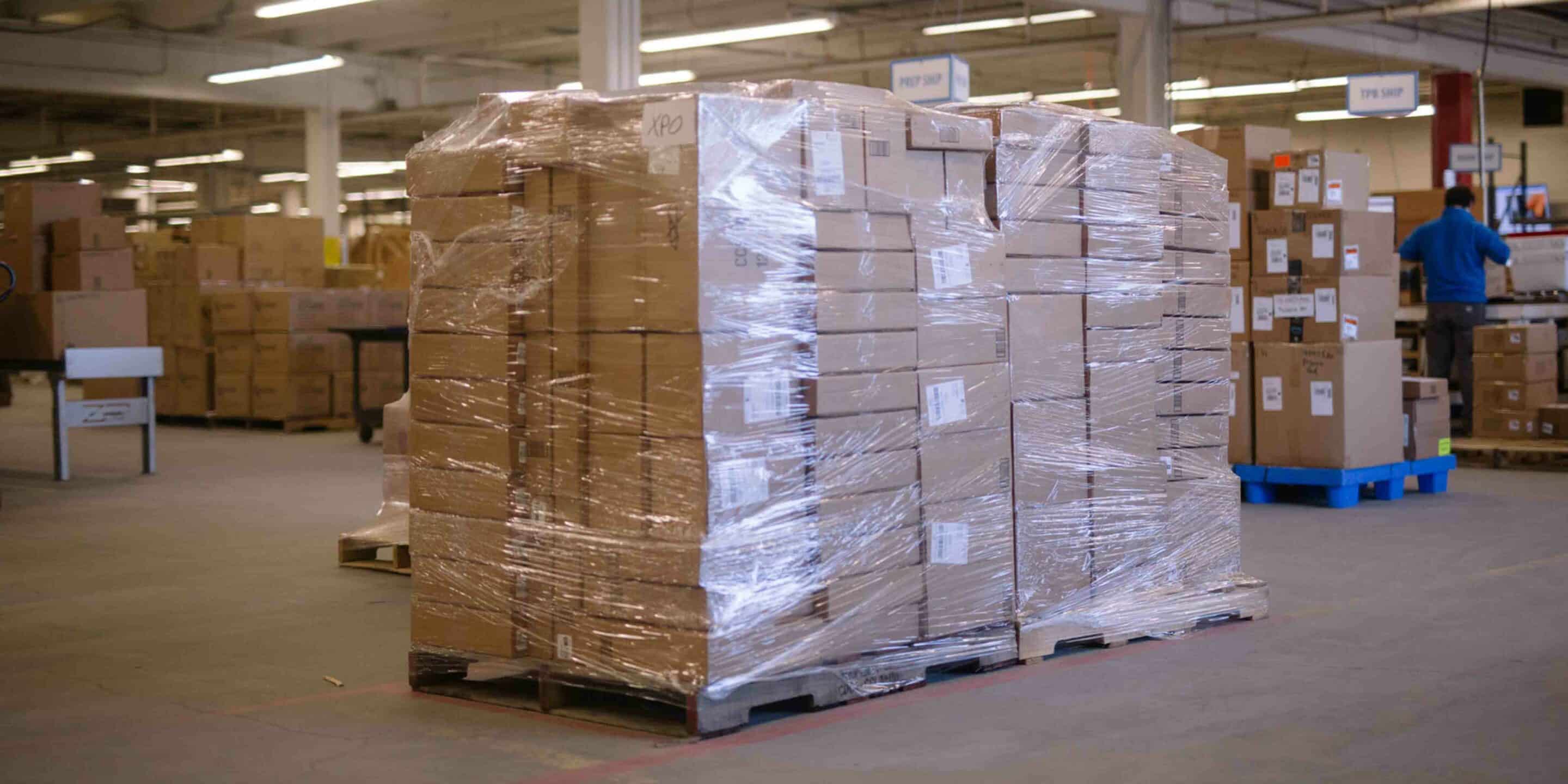
It’s a bustling Monday morning at your business, and a delivery truck pulls up, ready to unload a batch of your much-anticipated products. But instead of the usual chaos, you watch in satisfaction as your team efficiently processes the delivery in your newly optimized shipping and receiving area. This isn’t just a daydream—it’s a reality that’s well within your reach.
In the world of ecommerce businesses, the shipping and receiving area is often the unsung hero. It’s where deals are fulfilled, promises kept, and the first physical touchpoint of your products with the world. Yet, many business owners overlook the importance of setting up this area effectively. The result? Cluttered spaces, lost packages, and frustrated employees.
But it doesn’t have to be this way.
In this blog post, we dive into the art and science of setting up a shipping and receiving area that not only works efficiently but also becomes a cornerstone of your business’s success. Whether you’re dealing with limited space, budget constraints, or simply don’t know where to start, we’ve got you covered.
Jump right in: How to Set Up a Shipping and Receiving Area
Shipping & Receiving Area Overview
Welcome to the foundational block of your business’s logistics framework – the Shipping and Receiving Area. Often buzzing with activity, these zones are where the magic happens, where products come in and go out, forming the lifeline of your business. Let’s break it down and understand each area in detail.
The Receiving Area: Your Business’s Front Line
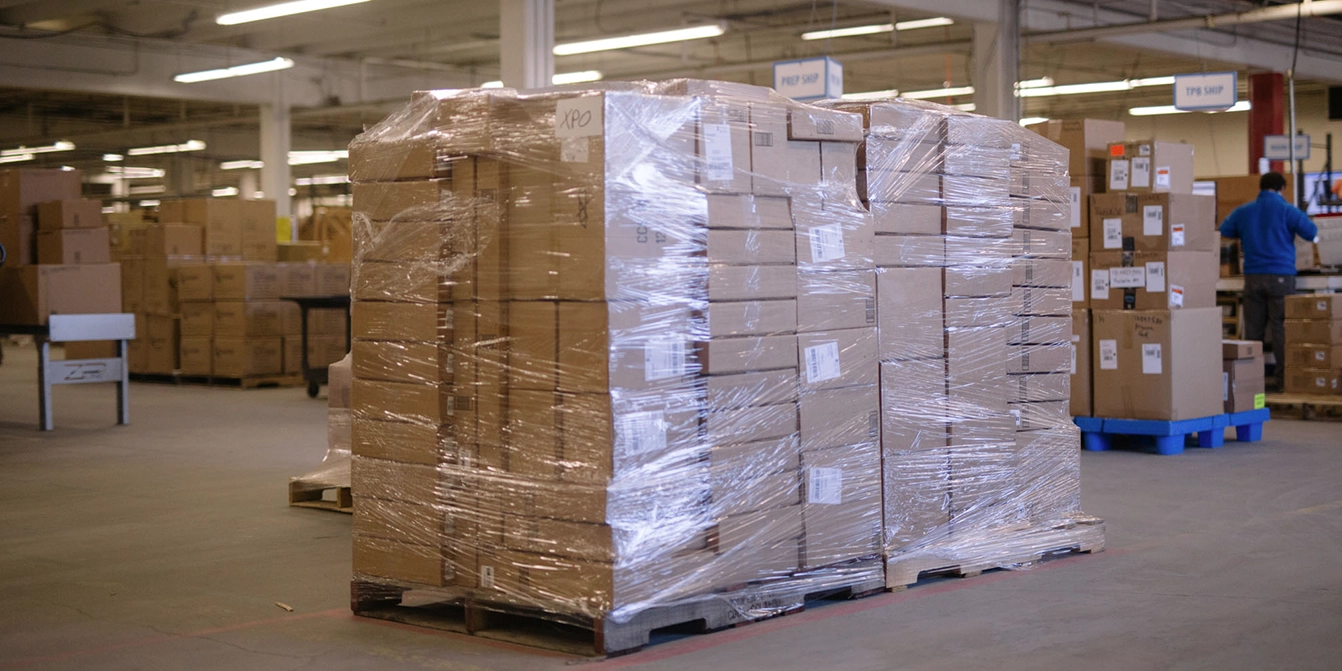
Key Functions of the Receiving Area
- Verification: Ensuring the delivered goods match purchase orders.
- Inspection: Checking for damages or discrepancies.
- Sorting and Labeling: Organizing goods for easy storage or distribution.
Essential Elements of an Effective Receiving Area
- Spacious Layout: Adequate space for unloading and inspecting shipments.
- Organized Storage: Shelving and bins for temporary holding.
- Efficient Tools: Equipment like forklifts, pallet jacks, and barcode scanners.
The Shipping Area: Where Your Products Embark on Their Journey
The shipping area is where products leave the nest – it’s a hub of packaging, labeling, and dispatching goods to your customers.
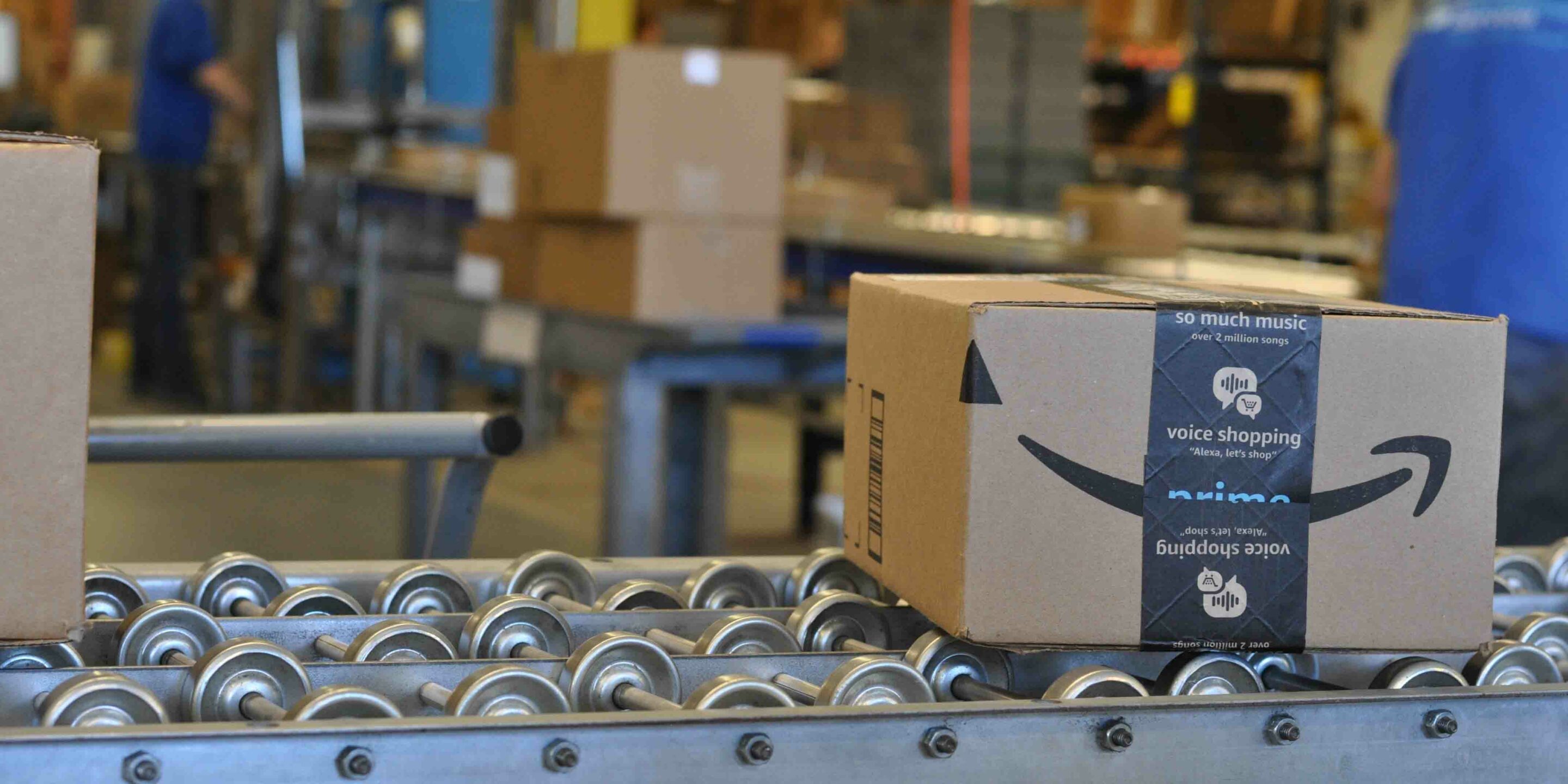
Critical Activities in the Shipping Area
- Packing: Properly packaging products for safe transit.
- Labeling: Attaching correct shipping labels and documentation.
- Dispatching: Organizing outgoing shipments based on schedules and priorities.
Must-Have Features of a Productive Shipping Area
- Packing Stations: Dedicated spaces with necessary packing materials.
- Labeling Systems: Technology for accurate and speedy labeling.
- Transportation Access: Easy access for loading onto trucks or other transport.
Understanding these areas is crucial for efficient business operations. They are not just spaces in your warehouse; they are strategic assets that, when managed well, can significantly boost your business’s efficiency and customer satisfaction. Stay tuned as we delve deeper into setting up these areas in the next sections of our blog!
Setting Up an Efficient Receiving Area
Creating an efficient receiving area is crucial for the smooth operation of your business’s logistics. This space acts as the gateway through which all your inventory passes, setting the stage for successful storage and distribution. Let’s delve into the essential steps to set up a receiving area that maximizes efficiency and minimizes errors.
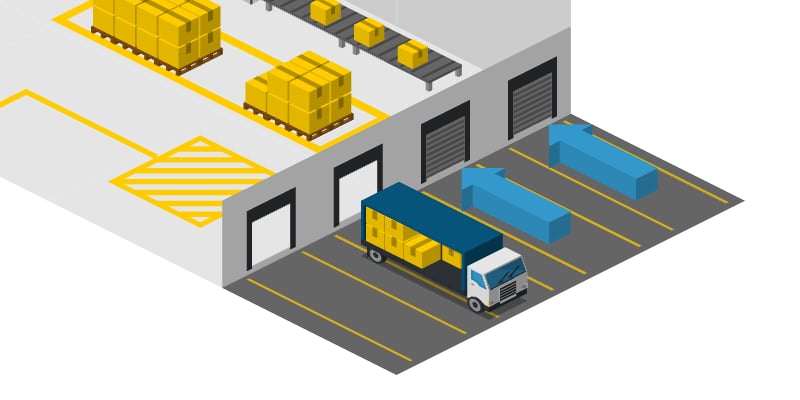
Step 1: Designate Adequate Docking Space
Key Considerations:
- Space for Delivery Trucks: Ensure enough docking stations to handle incoming shipments.
- Separation of Incoming and Outgoing Areas: To prevent conflicts, maintain distinct areas for incoming and outgoing goods.
- Right Equipment: Equip docks with necessary tools like hand carts, conveyors, forklifts, or pallet jacks based on the typical shipment size and type.
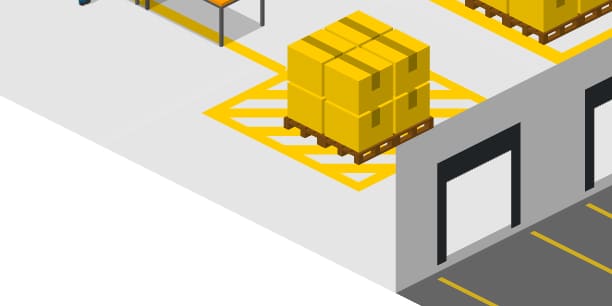
Step 2: Establish a Staging Area for Inspection
Importance:
- Temporary Holding Zone: A staging area provides a spot for shipments to be placed before processing.
- Inspection and Verification: Essential for checking goods against packing slips and ensuring order accuracy.
Setup Tips:
- Adequate Space Planning: Base the size of your staging area on the expected volume of goods.
- Inspection Tools: Provide necessary tools and equipment for effective inspection.
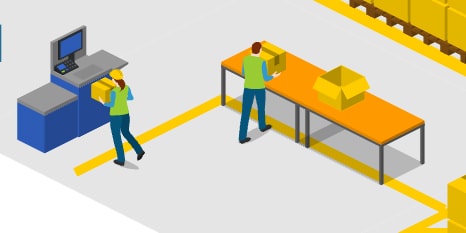
Step 3: Implement a Quality Control Protocol
Focus Area:
- Designated Section for Damaged Goods: Separate damaged items for return or disposal.
- Quality Benchmarks: Set standards for acceptable quality and manage exceptions effectively.
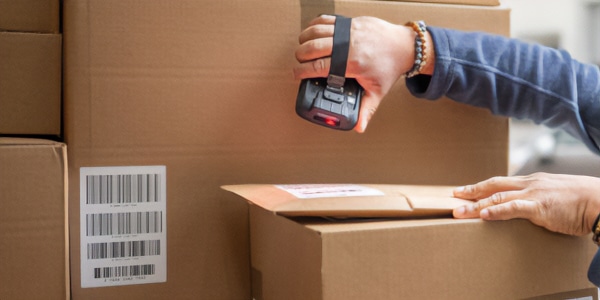
Step 4: Introduce a Systematic Labeling or Barcoding System
Key Elements:
- Inventory Tracking: Implement a Warehouse Management System (WMS) for precise tracking.
- Efficient Cataloging: Ensure a systematic approach to recording and storing goods in the main storage area.
- Perishable Goods Management: Special attention to cataloging items with expiration dates or recalls.
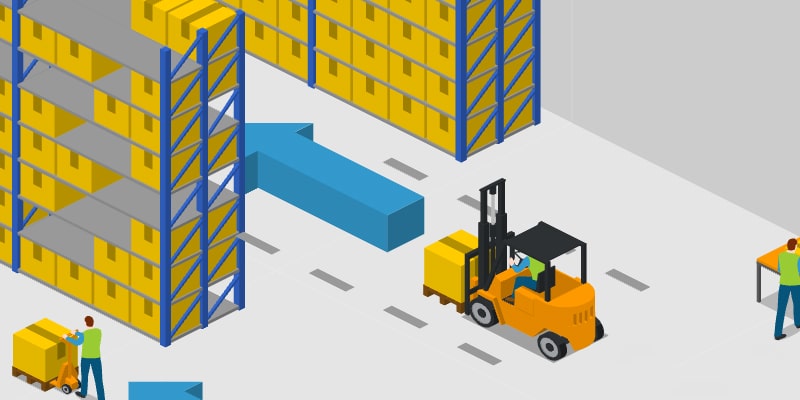
Step 5: Arrange Put-Away Lanes for Smooth Transportation
Planning Aspects:
- Clear Pathways: Designate lanes for the safe movement of goods to storage areas.
- Safety and Efficiency: Ensure enough space for machinery like forklifts to operate safely.
By meticulously planning each of these steps, your receiving area becomes more than just a section in your warehouse; it transforms into a dynamic, well-oiled machine that sets the stage for your business’s operational success. Stay tuned as we explore how to similarly optimize your shipping area in the next section of our blog!
Interested making Shipping and Receiving even easier?
Contact us and we’ll tell you how we can improve your shipping and receiving experience with a 3PL fulfillment service.
Setting Up an Effective Shipping Area
In the realm of logistics, an optimized shipping area is a key player in customer satisfaction and operational efficiency. Let’s explore how to set up a shipping area that not only meets but exceeds the needs of your fast-paced business environment.
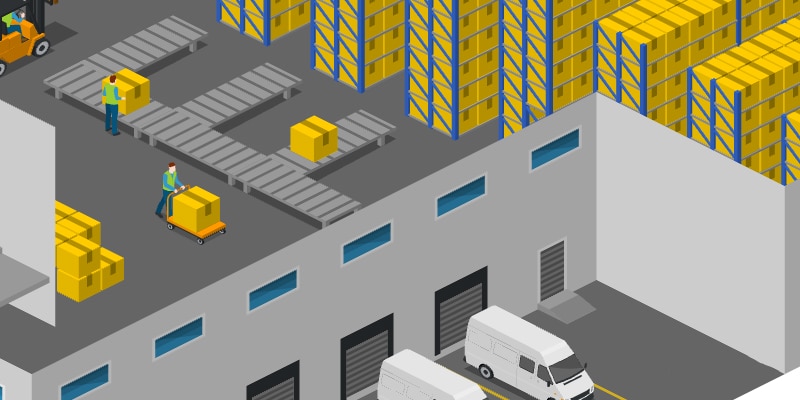
Step 1: Strategic Location Planning
Considerations:
- Proximity to Storage and Picking Areas: Minimizes the time and effort to move products for shipping.
- Space Requirements: Ensure the area is spacious enough for your specific shipping needs, considering the size and volume of your products.
- Accessibility for Shipping Vehicles: Ample space for loading and ease of access.
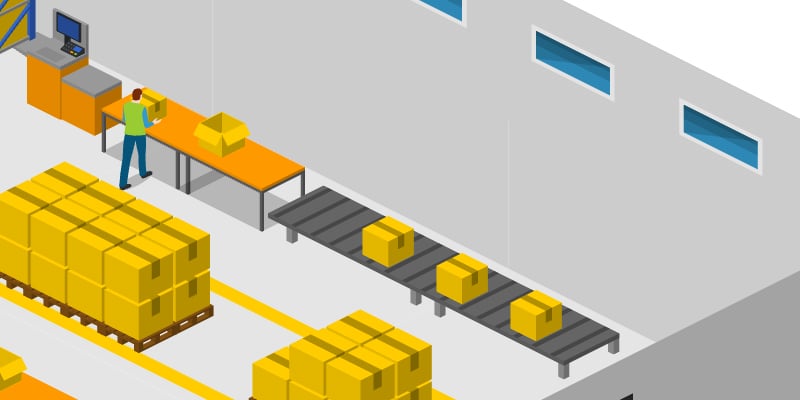
Step 2: Establish Efficient Packing Stations
Key Elements:
- Design of Packing Tables: Provide sufficient space for packaging, labeling, and quality control.
- Number of Stations: Base this on the volume of shipments and the workflow.
- Quality Control Zone: Incorporate areas within the stations for final checks.
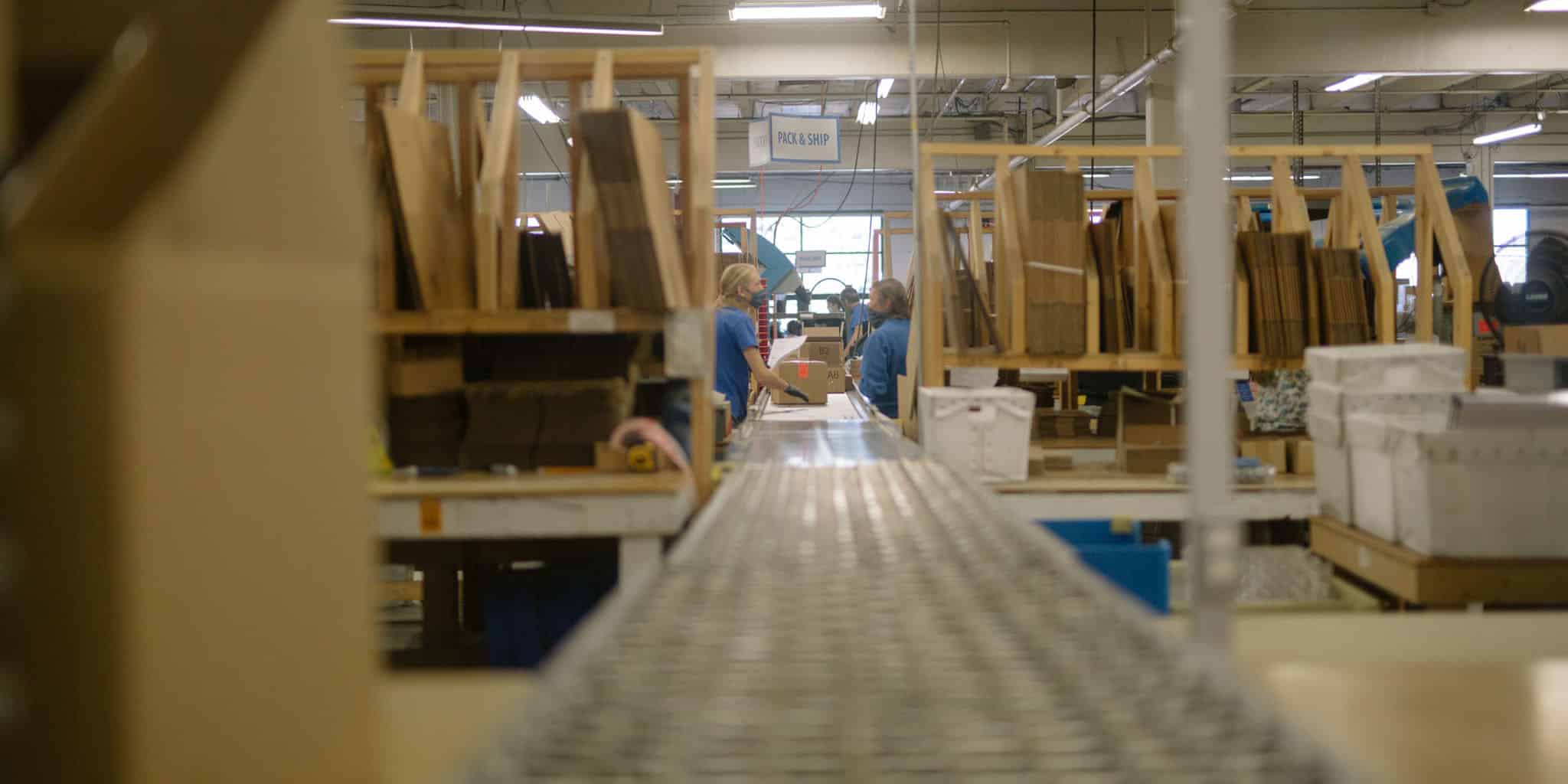
Step 3: Equip Packing Stations with Essential Supplies
Inventory of Supplies:
- Packing Materials: Boxes, envelopes, bags, labels, markers, and pens.
- Reference and Training Materials: Instructions, signs, and charts.
- Protective Gear: Necessary safety equipment like gloves and goggles.
- Technology: Scanners and keyboards for shipment management.
Organization Strategy:
- Frequent Use Accessibility: Place commonly used items within easy reach.
- Infrequent Use Storage: Less used items can be stored in less accessible areas.
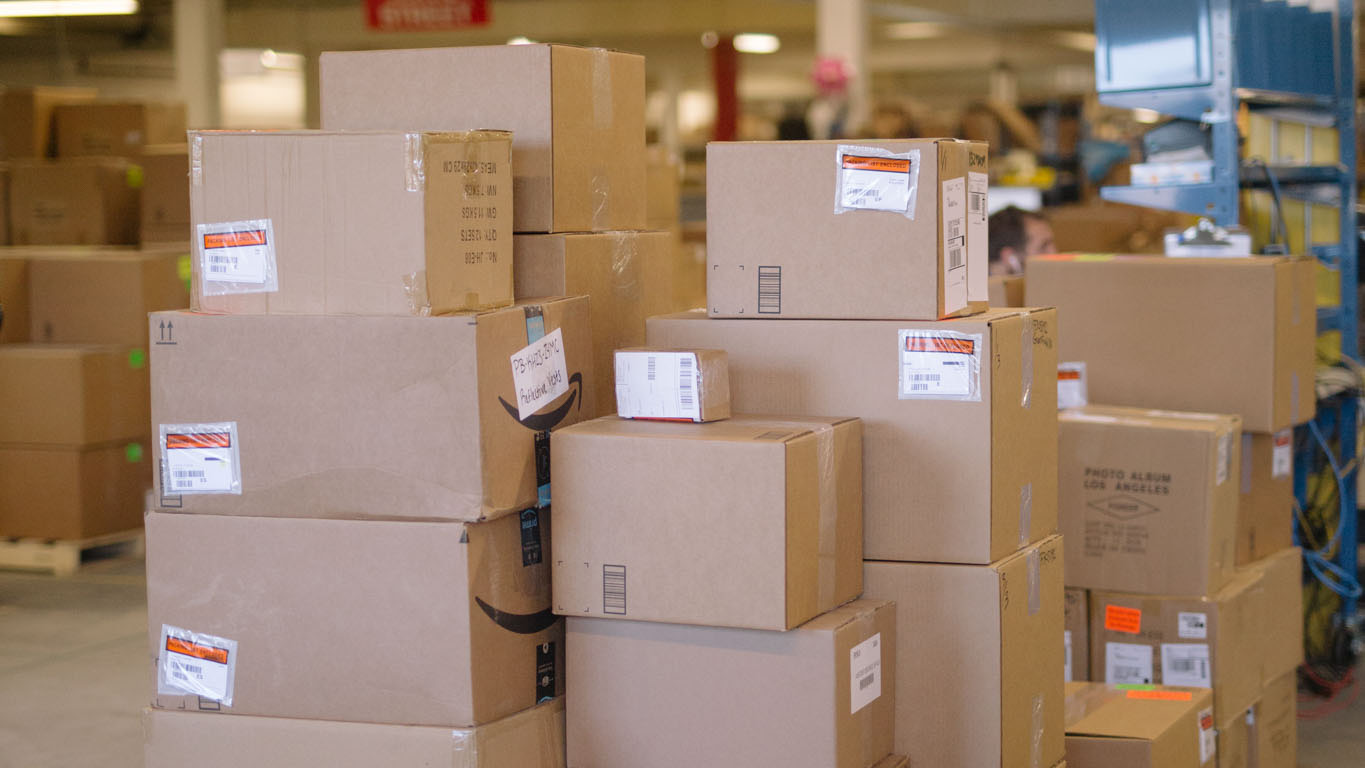
Step 4: Designate an Order Staging Area
Importance:
- Pre-Shipment Organization: Sort and organize packages before dispatch.
- Carrier-Specific Grouping: Separate packages based on the shipping carrier.
Planning Tips:
- Space Allocation: Adjacent to vehicle docks for ease of loading.
- Organizational System: Clearly marked areas for different carriers and shipment types.
By methodically setting up your shipping area with these steps, you transform it into a powerhouse of efficiency and reliability. This not only streamlines your operations but also enhances your customers’ satisfaction with timely and accurate deliveries. Up next, we’ll dive into the nuts and bolts of managing these areas for peak performance!
Optimizing Warehouse Setup: Best Practices for Shipping and Receiving Areas
To ensure the seamless operation of your small business, optimizing the setup of your shipping and receiving areas is crucial. This section will guide you through best practices, emphasizing efficiency, safety, and workflow optimization.
Meticulous Planning and Mapping
In setting up an efficient shipping and receiving area, the first and most crucial step is meticulous planning and mapping. This stage is about laying a strong foundation for your operational workflow, ensuring every process is streamlined and efficient.
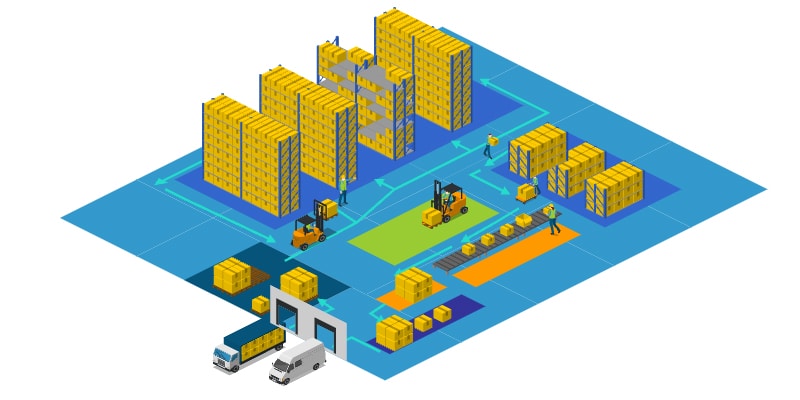
Strategic Approach
Detailed Procedure Analysis
- Task Identification: Break down every task required in the shipping and receiving areas. This includes receiving deliveries, inspecting goods, storing inventory, picking orders, packing, and dispatching.
- Process Flowcharting: Create flowcharts for each task, detailing every step from start to finish. This helps in visualizing the entire process and identifying areas where improvements can be made.
Warehouse Layout Mapping Tips
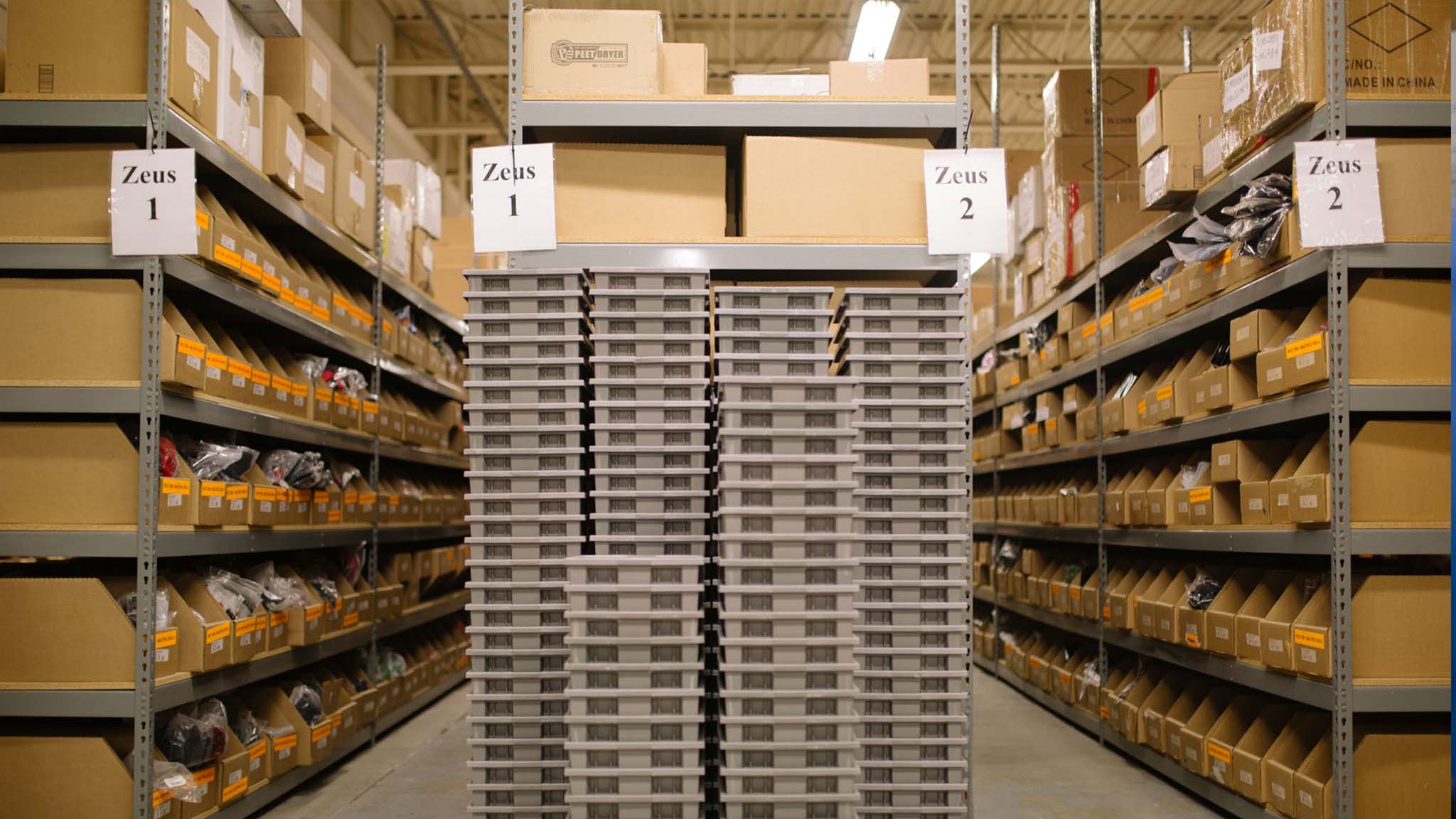
Divide your warehouse into clear zones based on the identified tasks. For instance, separate zones for receiving, inspection, storage, packing, and shipping. Consider factors like ease of movement between zones, proximity to related areas (like placing the packing area near the storage zone), and accessibility for employees and machinery. Use the available space effectively. If you’re working with limited space, consider vertical storage solutions or multi-functional furniture.
Bottleneck Identification
- Workflow Analysis: Use the map to identify areas where bottlenecks may occur. This could be due to limited space, inefficient layout, or procedural delays.
- Solution Implementation: Develop strategies to alleviate these bottlenecks. This might involve rearranging the layout, streamlining certain processes, or investing in faster or more efficient equipment.
Benefits of Meticulous Planning and Mapping
- Enhanced Efficiency: By thoroughly understanding and organizing each part of the operation, you can significantly increase the efficiency of your warehouse.
- Reduced Errors and Delays: A well-planned layout minimizes the chances of mistakes and delays, which are often costly for a small business.
- Improved Employee Performance: When employees have a clear understanding of the workflow and an efficiently laid out workspace, their productivity and job satisfaction can improve.
By investing time and effort into this initial planning and mapping stage, you lay a solid foundation for a smoothly running shipping and receiving operation. This meticulous approach not only streamlines your current processes but also provides a scalable model as your business grows.
Design for Efficiency and Safety
In the quest to optimize your shipping and receiving areas, an ergonomic design is not just a luxury but a necessity. It focuses on creating a work environment that prioritizes the safety, comfort, and efficiency of your employees, which in turn boosts productivity and minimizes the risk of injuries.
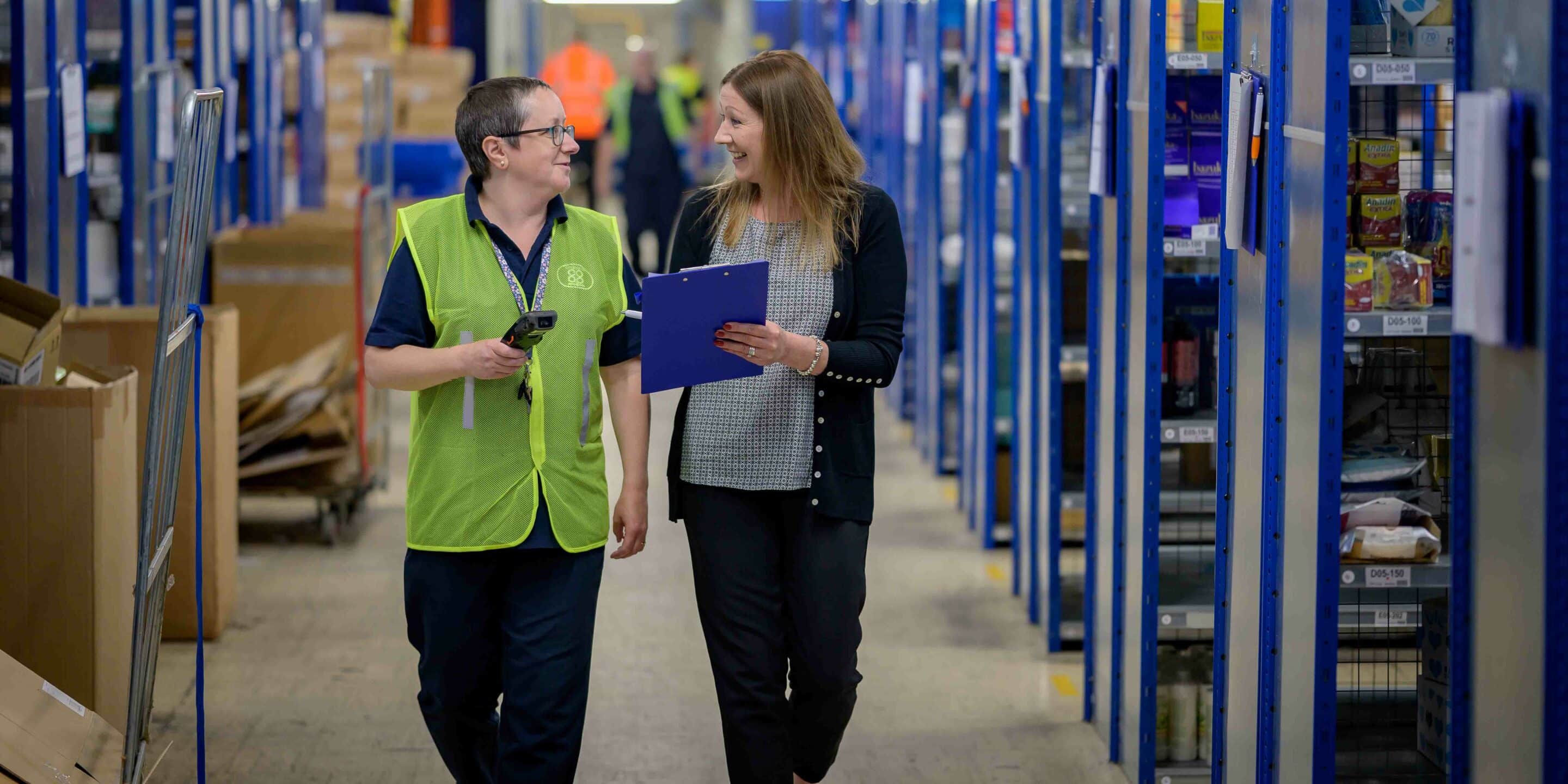
Employee Comfort
- Adjustable Workstations: Incorporate workstations that can be adjusted to the height of different employees. This flexibility reduces physical strain and enhances comfort.
- Anti-Fatigue Mats: Place these mats in areas where employees stand for long periods, like packing stations, to reduce foot and back pain.
- Adequate Lighting: Ensure the workspace is well-lit to reduce eye strain and improve visibility, thereby reducing errors and accidents.
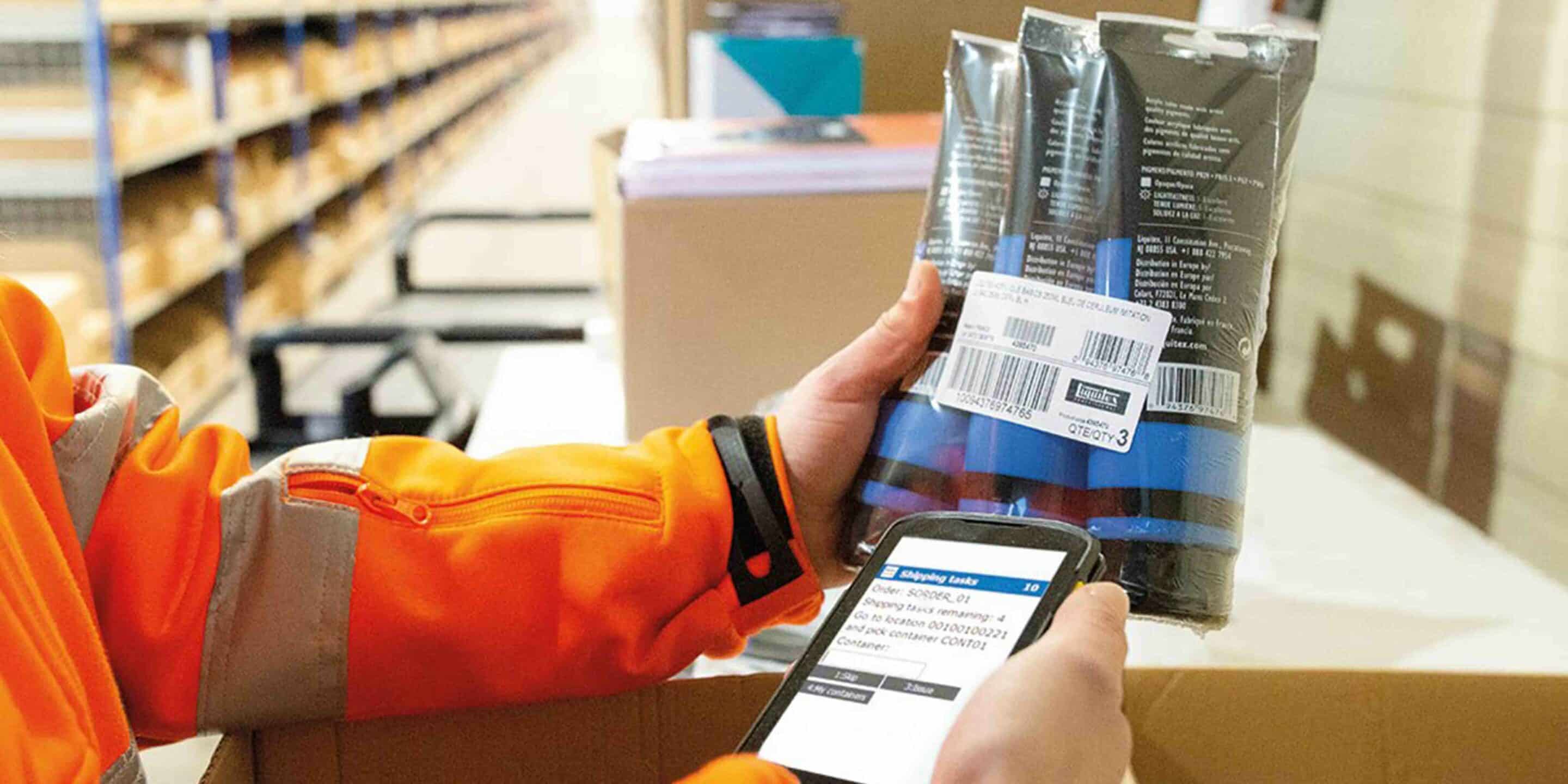
Efficient Labeling
- Color-Coded System: Implement a color-coded labeling system where each color represents a category of items. This visual cue speeds up the identification process.
- Clear and Concise Labels: Use labels that are easy to read and understand. Large fonts and straightforward language can greatly enhance clarity.
- Digital Label Integration: If feasible, integrate digital labels or screens that can be updated in real-time, allowing for flexibility and current information on inventory levels.
Strategic Item Placement
- Accessibility of High-Use Items: Place items that are frequently used at waist or chest level to minimize bending and reaching. This includes tools, packing materials, and commonly shipped products.
- Logical Product Grouping: Group products logically based on size, weight, or frequency of use. For example, heavier items should be stored in a way that minimizes the need for lifting.
- Efficient Space Utilization: Utilize vertical space effectively with shelving units. Ensure that the layout allows for easy access to products without overcrowding the area.
Additional Ergonomic Practices
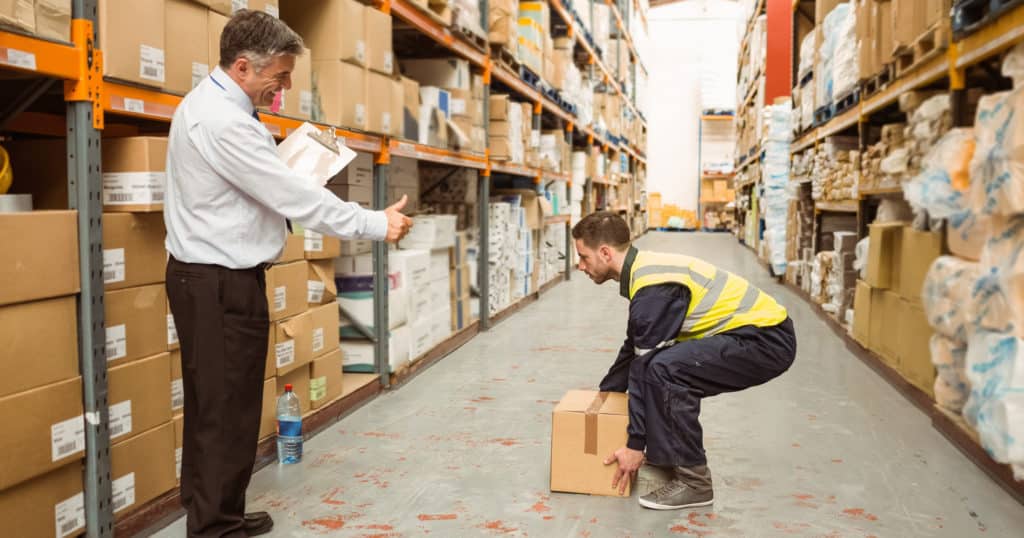
Other best practices include:
- Encouraging employees to take short breaks to prevent fatigue and maintain high levels of concentration.
- Provide training sessions on safe lifting and handling techniques to prevent injuries.
- Establish a system where employees can provide feedback on ergonomic issues and suggestions for improvements.
Benefits of Ergonomic Design
- Reduced Work-Related Injuries: Proper ergonomics significantly lower the risk of injuries related to repetitive strain, lifting, and prolonged standing.
- Increased Productivity: A comfortable and logically organized workspace allows employees to work more efficiently and with greater focus.
- Improved Morale and Job Satisfaction: Employees who work in a comfortable, well-organized environment are likely to be more satisfied with their job, leading to lower turnover rates and higher morale.
Implementing these ergonomic principles in your shipping and receiving areas not only fosters a safer and more comfortable work environment but also drives operational efficiency, contributing to the overall success of your business.
Fulfill Orders Effortlessly!
Get a FREE quote from eFulfillment Service to see how we could help simplify your online order fulfillment.
Exploring the 3PL Advantage for Your Business’s Logistics
Looking into the world of shipping and receiving, we’ve navigated the complexities of setting up efficient areas for your business. However, there is an intriguing alternative – the use of Third-Party Logistics (3PL) providers. This option offers a different path, potentially smoothing out the logistical challenges for the business owner.
Why 3PL Might Be Your Logistics Game-Changer
Imagine redirecting your focus from the nitty-gritty of logistics to the heart of your business – product development, customer engagement, and growth strategies. This is where a 3PL can shine.
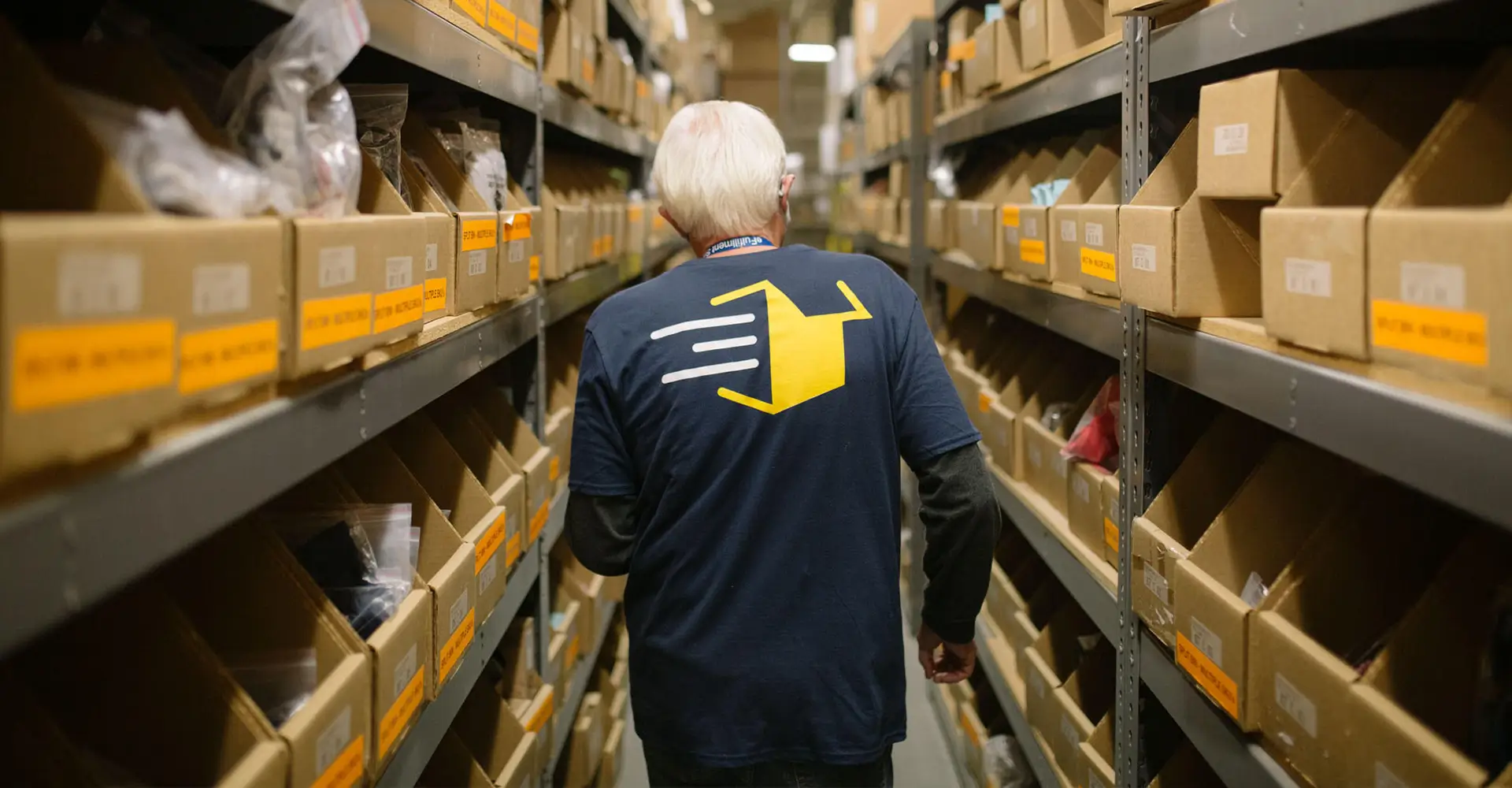
Expertise Without the Overhead
- Ready-Made Expertise: 3PLs bring specialized logistics knowledge, which is great for businesses still learning the ropes.
- Cost and Time Efficiency: The investment in infrastructure, technology, and personnel for in-house shipping and receiving can be substantial. A 3PL can cut these costs, offering a streamlined service.
Concentrating on What Matters Most
- Business Focus: Handing over the logistics reins to a 3PL means more time and resources to dedicate to your business’s core activities.
- Scalable Solutions: As your business grows or experiences seasonal peaks, a 3PL can adapt swiftly, ensuring your logistics can keep pace.
Is making the leap to a 3PL right for you?
Is a 3PL the key to scaling your business efficiently? Use this simple quiz to find out! Score each of the following eight questions from 1 to 5 (where 1 = Strongly Disagree, 5 = Strongly Agree) to evaluate if a fulfillment service might be a good choice for your company.
Conclusion – How to Set Up a Shipping and Receiving Area
As we wrap up our comprehensive guide on setting up a shipping and receiving area, it’s clear that this aspect of your business is not just a logistical necessity, but a significant opportunity for optimization and growth. By strategically designing your shipping and receiving areas, implementing efficient systems, and possibly considering the advantages of a 3PL partnership, you can transform these spaces into powerful assets for your business.
Remember, the goal is not just to manage the flow of products in and out of your warehouse, but to do so in a way that enhances overall efficiency, reduces errors, and improves employee satisfaction. Each step, from planning the layout to implementing advanced inventory management software, contributes to a smoother operation, setting the stage for your business’s success.
Whether you’re just starting or looking to refine existing processes, the journey to an optimized shipping and receiving area is ongoing. Embrace the challenge, and watch as these spaces evolve into well-oiled components of your business machinery, driving productivity and customer satisfaction to new heights.
Your Next Steps
Ready to embark on a journey toward streamlined logistics and enhanced growth? Reach out to eFulfillment Service for a bespoke fulfillment solution. We specialize in helping business like yours navigate the complexities of order fulfillment with ease and efficiency. Here’s what we offer:
- A Free Quote: Contact us today to get a free quote and learn how our services can be customized to your unique business needs.
- Proven Track Record: Our commitment to excellence is reflected in the testimonials from numerous satisfied clients.
- Tailored Solutions: We understand that each startup has its unique challenges, and we’re here to offer solutions that fit perfectly with your business model.
Let eFulfillment Service be your partner in transforming your fulfillment process, enhancing your customer experience, and catapulting your business to new heights.
Simplify Your Shipping with a Fulfillment Service!
Get a free quote from eFulfillment Service and see how a 3PL could simplify your fulfillment!
FAQs: Fulfillment Services
How do you organize shipping and receiving?
To effectively organize shipping and receiving areas in a warehouse, it is essential to strategically position these zones for operational efficiency. This involves placing them near storage and picking locations to minimize the movement of goods. Implementing clear signage and zoning is crucial for distinguishing different functions and areas. An efficient layout is designed to ensure a smooth flow of goods, easy access to equipment, and avoiding congestion. Scheduling deliveries proactively helps in managing the influx of goods and prevents conflicts between incoming and outgoing shipments. Lastly, utilizing technology, such as Warehouse Management Software (WMS), plays a pivotal role in tracking, organization, and overall efficiency of these operations.
How do you organize your receiving area?
Organizing a receiving area involves several key steps. Firstly, designate adequate docking space to accommodate delivery trucks, ensuring enough space for both incoming and outgoing goods. Establish a staging area for the temporary holding and inspection of goods, which is essential for verifying and sorting deliveries. Implementing a systematic labeling or barcoding system aids in efficient tracking and sorting of goods. Quality control protocols are crucial for inspecting and dealing with damaged goods, ensuring only quality items move forward in the process. Lastly, arranging clear and safe put-away lanes facilitates the smooth transportation of goods to storage areas, enhancing safety and efficiency.
What are the features of a good receiving area?
A good receiving area is characterized by a spacious layout that provides ample room for unloading, inspecting, and sorting shipments. It should have organized storage solutions, such as shelving and bins, for the temporary holding of goods. Efficient equipment, including forklifts, pallet jacks, and barcode scanners, is essential for handling and tracking goods. Clear signage is important for easy navigation and process flow within the area. Additionally, dedicated inspection zones are necessary for verifying and checking the quality of incoming goods, ensuring that only items that meet standards proceed to the next stages.
How do I set up a shipping department?
Setting up a shipping department involves several strategic steps. Start by planning the location of the shipping area, ensuring it is in close proximity to storage and picking areas to minimize product movement. Establish efficient packing stations, designed with the necessary supplies and technology for packaging, labeling, and quality control. Implementing a labeling system using technology ensures accuracy and speed. Designating an order staging area helps in organizing and grouping packages before dispatch based on carriers and destinations. Adopting technology and tools for shipment management and tracking is also essential for a well-functioning shipping department.
What are 5 steps in the receiving process in order?
The receiving process in a warehouse is a critical operation that involves a series of systematic steps to ensure accuracy and efficiency. These steps, in order, are:
- Verification: This is the initial step where the received goods are checked against the purchase orders. It involves confirming that the types and quantities of items delivered match what was ordered.
- Inspection: Once the goods are verified, they undergo a thorough inspection. This step is crucial for identifying any damages, discrepancies, or quality issues with the delivered items.
- Sorting and Labeling: After inspection, the goods are sorted based on their destination within the warehouse. They are then labeled appropriately for easy identification, which aids in efficient storage and retrieval.
- Storage: The sorted and labeled goods are then moved to their designated storage areas. This step involves organizing the goods in a manner that optimizes space utilization and accessibility.
- Inventory Record Updating: The final step in the receiving process is updating the inventory records. This is vital for maintaining accurate stock levels, which is essential for effective inventory management and future order planning.




0 Comments